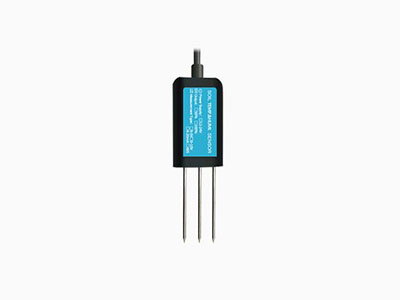In the heart of the agricultural revolution, technology is playing a pivotal role in transforming traditional farming practices into smart, data-driven enterprises. One of the most innovative advancements in this field is the development and deployment of advanced soil sensors. These cutting-edge devices are providing farmers with real-time data, enabling them to make informed decisions that optimize crop yield, reduce environmental impact, and enhance overall farm productivity.

The Evolution of Farming: From Intuition to Data
For centuries, farming has been largely reliant on the intuition and experience of farmers. They would observe the weather patterns, assess soil conditions by feel, and make decisions based on historical knowledge passed down through generations. While this approach has sustained agriculture for millennia, it is not without its limitations. Human error, unpredictable weather changes, and the variability of soil conditions across different fields can significantly impact crop outcomes.
Enter the era of precision agriculture, where technology is revolutionizing the way farmers interact with their land. Advanced soil sensors are at the forefront of this transformation, offering a level of precision and insight that was previously unimaginable. These sensors are designed to collect a multitude of data points from the soil, providing farmers with a comprehensive understanding of their fields’ conditions.
How Advanced Soil Sensors Work
Soil sensors are typically small, rugged devices that can be inserted into the ground at various depths. They are equipped with an array of sensors that measure different parameters such as moisture content, temperature, pH level, electrical conductivity, and nutrient levels. Some advanced models also incorporate sensors for detecting soil compaction, salinity, and even the presence of pests or diseases.
The data collected by these sensors is transmitted wirelessly to a central hub or directly to a farmer’s smartphone or computer. This real-time data allows farmers to monitor soil conditions continuously, rather than relying on periodic manual tests. The information is presented in an easy-to-understand format, often through intuitive dashboards and graphs, enabling farmers to quickly assess the state of their fields.
The Benefits of Real-Time Data
- Optimized Irrigation
One of the most immediate benefits of soil sensors is their ability to provide accurate moisture data. Over-watering or under-watering can have detrimental effects on crop health and yield. With real-time moisture data, farmers can irrigate their fields precisely when needed, conserving water resources and reducing costs. This is particularly crucial in regions where water scarcity is a major concern.
- Nutrient Management
Soil sensors also provide valuable information on nutrient levels, allowing farmers to apply fertilizers more efficiently. By understanding the exact nutrient requirements of their crops, farmers can avoid over-fertilization, which can lead to soil pollution and reduced crop quality. Conversely, under-fertilization can result in stunted growth and lower yields. Real-time data enables farmers to strike the perfect balance, enhancing crop health and productivity.
- Disease and Pest Management
Certain soil conditions can create an environment conducive to the proliferation of diseases and pests. By monitoring soil parameters such as moisture, temperature, and pH, farmers can identify conditions that may favor the development of these threats. Early detection allows for timely intervention, reducing the need for chemical pesticides and improving the sustainability of farming practices.
- Improved Crop Yield and Quality
With precise data on soil conditions, farmers can make informed decisions about planting, harvesting, and crop rotation. This leads to better crop yields and improved product quality. By optimizing soil health and nutrient availability, farmers can ensure that their crops reach their full potential.
- Environmental Sustainability
Advanced soil sensors contribute to more sustainable farming practices by reducing the use of water, fertilizers, and pesticides. This, in turn, minimizes the environmental footprint of agriculture, preserving ecosystems and biodiversity. By adopting precision agriculture techniques, farmers can produce more food with less environmental impact, addressing the growing demand for sustainable agriculture.
Case Studies: Real-World Applications
To illustrate the impact of advanced soil sensors, let’s consider a few case studies from around the world.
California’s Almond Orchards:
In the drought-stricken state of California, almond farmers are using soil moisture sensors to optimize their irrigation practices. By precisely controlling water usage, these farmers have been able to maintain high yields while significantly reducing their water consumption.
Indian Rice Fields:
In India, where rice is a staple crop, soil sensors are being used to monitor nutrient levels and soil health. This has led to more efficient use of fertilizers and improved crop yields, benefiting both farmers and the environment.
European Vineyards:
In European vineyards, soil sensors are playing a crucial role in disease management. By monitoring soil conditions, vintners can take proactive measures to prevent the spread of diseases that can devastate entire crops.
Challenges and Future Outlook
Despite their numerous benefits, advanced soil sensors face some challenges. The initial investment cost can be prohibitive for small-scale farmers, and the technology requires a certain level of digital literacy to operate effectively. Additionally, the accuracy and reliability of sensors can vary, and farmers need to ensure that they are using reputable products.
However, as the technology continues to evolve, these challenges are likely to be addressed. Governments and agricultural organizations are increasingly recognizing the value of precision agriculture, and there is a growing push to provide financial support and training to farmers. This, combined with advancements in sensor technology and data analytics, is expected to drive wider adoption of soil sensors in the coming years.
Conclusion
Advanced soil sensors are at the forefront of the precision agriculture revolution, providing farmers with real-time data that enables them to make informed decisions. By optimizing irrigation, nutrient management, and disease control, these sensors are enhancing crop yields, improving product quality, and promoting environmental sustainability. While challenges remain, the future of agriculture looks increasingly data-driven, with soil sensors playing a crucial role in feeding the world’s growing population while preserving our planet’s precious resources. As technology continues to advance, the potential for soil sensors to transform farming practices is limitless.